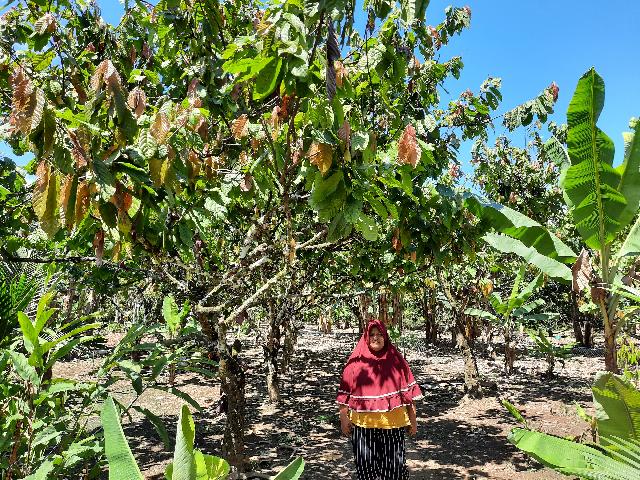
Along the course of the recent decade, the economic growth of Berau Regency, Eastern Kalimantan, relies on the mining sector. However, in the future, the Government of Berau Regency announce the sustainable growth in agriculture as the priority of development. Recently, the agricultural sector, forestry, and fishery have contributed approximately 10.47% for the economics of Berau (BPS Berau, 2020)
The Berau government has determined five main commodities of agricultural sector, those are palm oil, cocoa, rubber, coconut and pepper. However, the distribution of land usage of the five commodities are seen to be imbalanced. In 2019 palm oil plantations has taken 93% of the total agriculture area in Berau Regency (BPS Berau, 2020). Therefore, the Berau Government sees that the development of cocoa, rubber, coconut and pepper commodities needs to be improved whilst preserving natural resources for future generations.
From the survey, we found the presence of decline in land productivity on the commodities of cocoa, rubber and coconut in the period of the last three years. In 2019, cocoa productivity has dropped by 0.1 ton/hectare from the past two years that was 1.1 tonnes / hectare. This also happened on rubber which even has dropped by 0.2 ton/hectare, whereas in 2019 the rubber productivity was around 1.1 ton/hectare. Our assumption is that this is due to farmer’s decision to convert their cocoa or rubber land to commodities that has more stable selling price such as palm oil, where according to Directorate General of Agriculture, there was an increase of area of palm oil plantation by 10% from 2016 to 2018. The decline in in land productivity also occurred in commodity of coconut that is 14 fruits/hectare therefore in 2019, the productivity has become 955 fruits / hectare. However, different situation happened in commodity of pepper. In the last three years, the productivity of pepper has increased by 0.3 ton/year, thus in 2019 the productivity is 1.1 tons / year.
We see that the supply chain for prioritized commodities in Berau is rather long and the majority of products are distributed in raw material from, which has low selling price. The cocoa commodity is distributed to out of Berau only in the form of cocoa beans, both dry (1%) and fermented cocoa beans (99%). Same case happened to rubber commodity, the majority of products distributed out of Berau are wet cup lumps (79%) and some of it are dried cup lumps (21%).
Most of the coconut commodities are distributed to suffice domestic consumption in the form of grated coconut (70%) as well as the coconut beverage products (30%). The same case also happened to pepper. Although there have been efforts to process whole pepper to better quality and more modern packaging, almost all of the paper products that come out of Berau are still in the form of unprocessed dry pepper corns (99%).
The farmer as the first level actor in the supply chain of the prioritized commodity, is the party that bears the most risks in carrying out their roles. Generally, the problems faced by farmers in the supply chain are price fluctuations, limited access upon price information, and crop pest attacks.
Generally, the role of the farmer community needs to be improved. Based on the survey, we found that approximately 45% of farmers stated that they already have joined farmer group or community. Furthermore, 33% members of farmer community already have program of activities. Besides, only 43% members of farmer community have received aids in program activity or material from various parties.
Based on the findings of this study, the researcher team recommends several activities
that focus on:
1. The improvement of land productivity in prioritized commodities by implementing an
eco-friendly cultivation system.
2. Strengthening the roles of farmer community as supply chain actors.
3. The processing of the commodities into products with more added value.
4. Product quality improvement through quality standardization for the products.
5. Strengthening the roles of related parties to facilitate actors in the supply chain in conduction their roles
This study was conducted by Ruang Inovasi and supported by GIZ in July 2020
